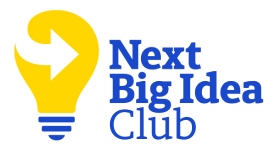World-leading business thinker, renowned TED speaker, and #1 bestselling author Daniel Pink recently sat down with Henry Timms, co-author of New Power: How Power Works in Our Hyperconnected World—and How to Make It Work for You, to talk about how to combine the creative energy of young employees with the credibility and influence of established ones. This article is a condensed version of the interview, which was produced by the Next Big Idea Club.
Pink: [Let’s say] I’m working at a 20 person design firm, or an insurance company. What do I do with these [new power] principles if I’m not in charge?
Timms: There’s a lot that can be done to encourage people who are in charge to think differently. A lot of companies recognize the need to change, right? That’s not a new story.
So they’ll often bring in “the disruptor,” some 27-year-old who used to work at Facebook who is going to come in and change everything. But those people often won’t be successful because they don’t have any legitimacy—the culture will be too big of a clash, and they’ll make a lot of people feel left behind.
If you have a lot of ideas and you want to shift outcomes in the workplace, think about the people who are senior to you who you could help make the shift. Because they want to shift too. They recognize that all these old power skills aren’t going to get them where they need to go next. But they’re often feeling threatened by the world of the crowd, feeling threatened by people like you who are approaching the world with a different set of values.
So my advice here would be to find a senior leader and adopt them, help them make a shift. And by making a shift, the likelihood is they’ll take you with them.
The other thing is be prepared to experiment. I was with a company recently, and there’s a young woman who is one of their superstars. She’s in this one function—it’s not a technical function—and she’s dealing with this internal app that is no good, not working properly. So she teaches herself to code during her lunch breaks and in the evenings, and creates a new, better app, and puts it into the market.
Suddenly you’ve got this person who is, in a very new power way, not prepared to sit in her lane. She’s not prepared to just sit [within] the walls of the old power world, and wait until her times comes. She has created something with amazing value to the institution, but that value comes at the cost of threatening some people who have done those jobs for a long time.
In moments like that, the real question is how do you, as a company, think about that employee? Are you going to reject [her idea]? A lot of companies would: “Not your job. Don’t do it.” Are you going to tolerate it? “Look, she tried hard. Fair enough, it’s a good product, but let it go.” Or are you going to embrace it?
We often scold younger people right now. “They’re moving too fast! They want too many jobs! They want to be promoted too quickly!” I think that’s quite a tired argument.
The other way of thinking about that is you’ve got all these people who want to do stuff. They want to move the needle. Your job as a leader is to make it easier for them, not to tell them to sit in line.
So if you’re the boss in the workplace, making space for people who want to upload is really important. And if you’re the person who wants to upload, recognize that you can’t just walk into a workplace, shout, “Screw you, I’m disrupting,” and assume that that’s going to get you a good outcome, because it won’t. You have to be sensitive to a cultural shift.
Join the Next Big Idea Club to view Pink and Timms’ full conversation.










